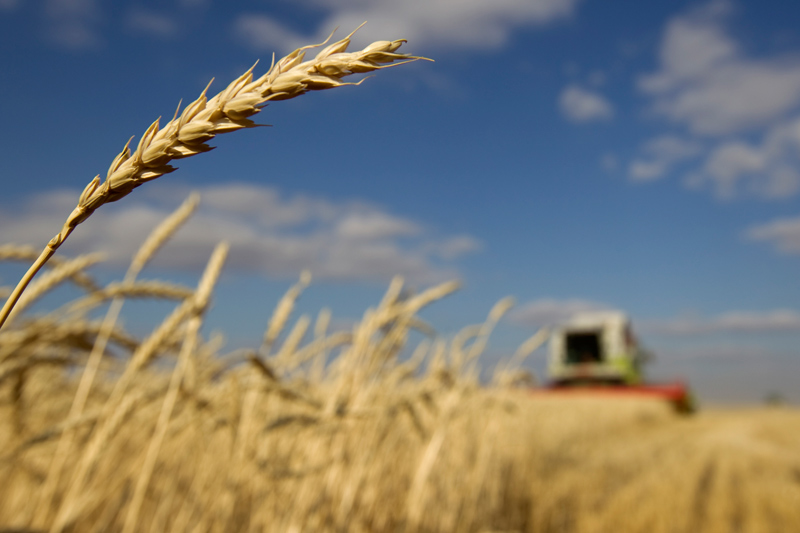Investing.com - Wheat futures came under heavy selling pressure for a second day on Tuesday, after Russia said it will not limit grain exports this year and as improving weather conditions in key wheat-growing regions in the U.S. added to the view that world supplies are ample.
On the Chicago Mercantile Exchange, wheat futures for May delivery traded at USD6.4338 a bushel during European morning trade, tumbling 1.23%.
It earlier fell by as much as 0.55% to trade at USD6.4238 a bushel, the lowest since March 14.
Wheat prices plunged nearly 3% on Monday after Russian Prime Minister Vladimir Putin said that the nation will not limit grain exports this year, as the country has overcome the consequences of a severe drought two years ago.
Putin said Monday that he sees "no need" to limit the exports this year.
His deputy, top agriculture official Viktor Zubkov, said that this year's exports might reach 27 million tons. That compares with 21.4 million tons exported in 2009.
Russia, once the world's third largest grain exporting nation, introduced an 11-month ban on grain exports in August 2010 after the worst drought in at least half a century wiped out a third of its grain crops.
The ban was lifted last May, but markets speculated the country planned to curb wheat exports after Deputy Agriculture Minister Ilya Shestakov said in early February that Russia was considering a protective grain export duty to put a brake on record exports and ensure sufficient domestic supplies.
Russia is a major wheat exporter and competes with the U.S. for business on the global market. An upbeat Russian grain export outlook could weigh on demand for U.S. supplies, which is the world’s third largest wheat producer and biggest exporter.
Meanwhile, favorable weather conditions in the southern U.S. Great Plains winter-wheat belt added to the selling pressure.
Agricultural meteorologists forecast significant rainfall throughout the region, which can potentially boost crop development.
In Kansas, the top US wheat-growing state, the U.S. Department of Agriculture rated the winter crop at 53% in "good" or "excellent" health, far better than the 27% last year.
In Texas, parts of which saw rains of up to two inches last week, the rating improved to 34% good or excellent, from 33% a week ago.
"Rainfall and warm temperatures helped wheat and oats progress well across most of the state," the USDA said.
Elsewhere on the Chicago Mercantile Exchange, corn for May delivery dropped 1.15% to trade at USD6.5575 a bushel, while soybeans for May delivery traded at USD13.5625 a bushel, slumping 0.75%.
On the Chicago Mercantile Exchange, wheat futures for May delivery traded at USD6.4338 a bushel during European morning trade, tumbling 1.23%.
It earlier fell by as much as 0.55% to trade at USD6.4238 a bushel, the lowest since March 14.
Wheat prices plunged nearly 3% on Monday after Russian Prime Minister Vladimir Putin said that the nation will not limit grain exports this year, as the country has overcome the consequences of a severe drought two years ago.
Putin said Monday that he sees "no need" to limit the exports this year.
His deputy, top agriculture official Viktor Zubkov, said that this year's exports might reach 27 million tons. That compares with 21.4 million tons exported in 2009.
Russia, once the world's third largest grain exporting nation, introduced an 11-month ban on grain exports in August 2010 after the worst drought in at least half a century wiped out a third of its grain crops.
The ban was lifted last May, but markets speculated the country planned to curb wheat exports after Deputy Agriculture Minister Ilya Shestakov said in early February that Russia was considering a protective grain export duty to put a brake on record exports and ensure sufficient domestic supplies.
Russia is a major wheat exporter and competes with the U.S. for business on the global market. An upbeat Russian grain export outlook could weigh on demand for U.S. supplies, which is the world’s third largest wheat producer and biggest exporter.
Meanwhile, favorable weather conditions in the southern U.S. Great Plains winter-wheat belt added to the selling pressure.
Agricultural meteorologists forecast significant rainfall throughout the region, which can potentially boost crop development.
In Kansas, the top US wheat-growing state, the U.S. Department of Agriculture rated the winter crop at 53% in "good" or "excellent" health, far better than the 27% last year.
In Texas, parts of which saw rains of up to two inches last week, the rating improved to 34% good or excellent, from 33% a week ago.
"Rainfall and warm temperatures helped wheat and oats progress well across most of the state," the USDA said.
Elsewhere on the Chicago Mercantile Exchange, corn for May delivery dropped 1.15% to trade at USD6.5575 a bushel, while soybeans for May delivery traded at USD13.5625 a bushel, slumping 0.75%.
